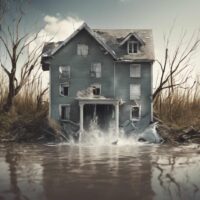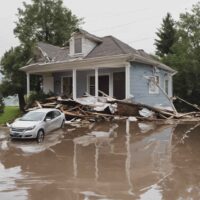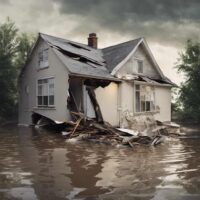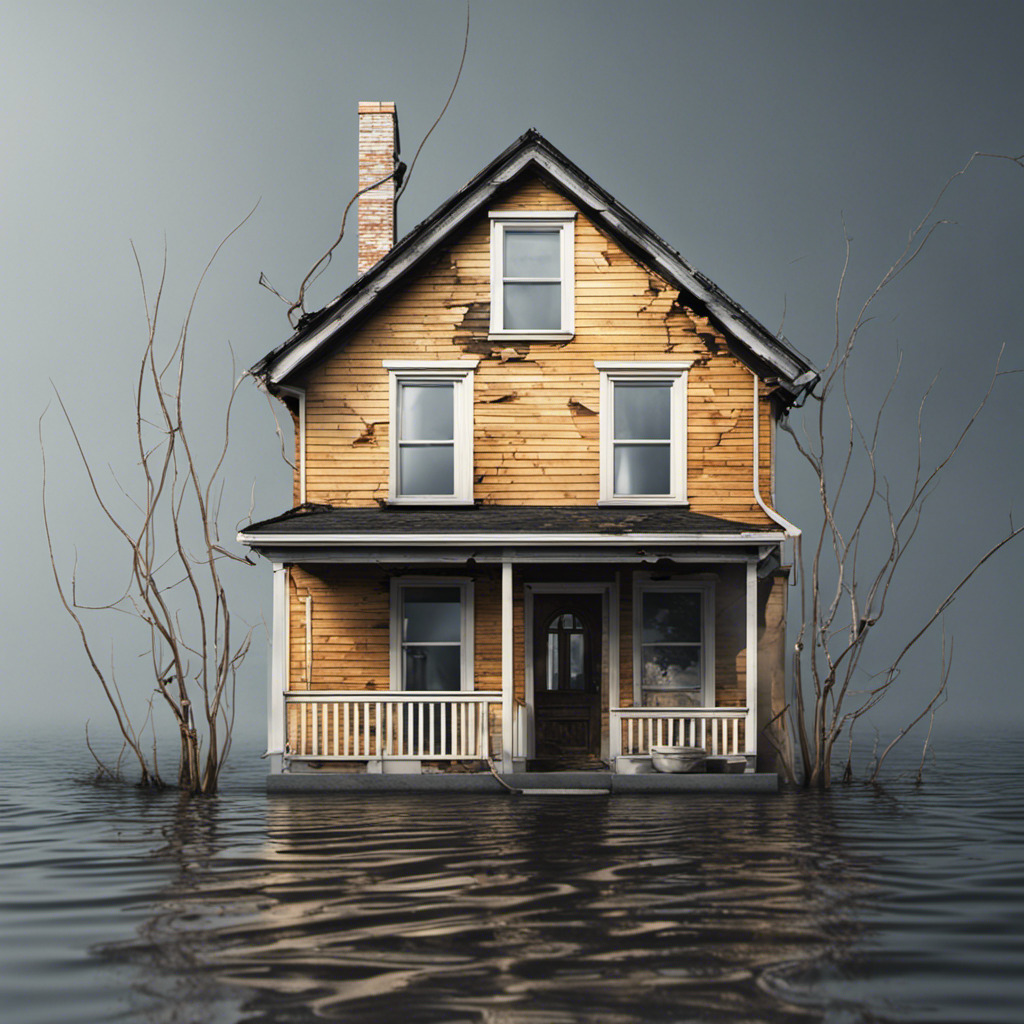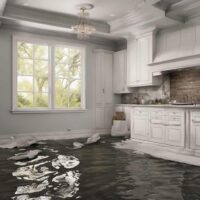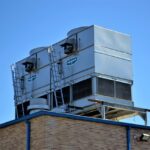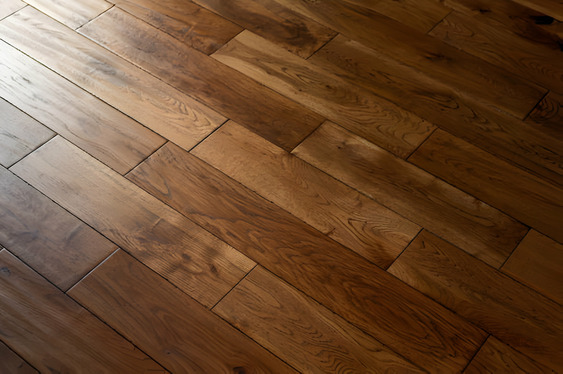
The discovery of water damage to your beloved hardwood floors can be a distressing experience for any homeowner. The once-prideful glossy finish of your hardwood is now tarnished by the intrusion of water, posing a formidable challenge. Nevertheless, there is no need to panic—restoring water-damaged hardwood floors is not only feasible but can also be a voyage of renewal and preservation. In this comprehensive guide, we set out to dissect the technique of drying out water-damaged hardwood floors, providing you with the knowledge required for successful restoration.
In our homes, hardwood floors are special because they are elegant and long-lasting. If you have water damage, however, it is not just a matter of wiping the water away; you also need to know the subtleties of the damage, act quickly, and use appropriate drying methods. This guide will take you step-by-step through every step of the process, from identifying the types of water damage to repairing and refinishing. We will also go over the nuances of moisture testing, preventive measures, and seeking professional assistance when necessary. Upon completion of this journey, you will have not only restored the classic beauty of your hardwood floors but also the assurance to protect them for many years to come.
See also our post on A Comprehensive Guide to Drying Water-Damaged Documents
Identifying Types of Water Damage
Understanding the nature of water damage is the first step in devising a successful restoration plan. Here are the different types of water damage:
Clean Water Damage
This occurs when the water is from a clean source, like a burst pipe. Swift action is crucial to prevent further damage.
Grey Water Damage
Water from appliances or sinks falls into this category. While not as clean as tap water, it doesn’t contain sewage.
Black Water Damage
The most severe, blackwater damage involves water with sewage or other contaminants. Professional help is usually necessary.
Surface Damage
Limited to the top layer of the hardwood, surface damage is noticeable through discoloration and minor warping.
Subfloor Damage
When water seeps through the hardwood, damaging the subfloor underneath, it requires more extensive restoration.
Immediate Action Steps
Addressing water damage promptly is crucial to prevent further harm to your hardwood floors. Here are the proper steps to follow:
Remove Standing Water
Use towels, mops, or wet/dry vacuums to remove standing water as quickly as possible.
Ventilation
Open windows and doors to increase ventilation and aid in the drying process.
Elevate Furniture
Lift furniture off the wet floor using wooden blocks or aluminum foil to prevent additional damage.
Remove Rugs and Carpets
Take away any rugs or carpets to allow the hardwood to dry uniformly.
Assess Severity
Evaluate the extent of the water damage to determine the necessary level of intervention.
Drying Techniques
Implementing proper drying techniques is crucial to salvaging your hardwood floors. Here are some helpful techniques to follow:
Use Fans
Position fans strategically to promote air circulation, expediting the drying process.
Dehumidifiers
Deploy dehumidifiers to remove excess moisture from the air, aiding in faster drying.
Remove Baseboards
Taking off baseboards facilitates better airflow, ensuring all affected areas dry thoroughly.
Apply Heat
Utilize heaters to increase the temperature, which accelerates the evaporation of moisture.
Focus on Subfloor
If subfloor damage is suspected, focus on drying the subfloor thoroughly to prevent long-term issues.
Moisture Testing
Regularly testing the moisture levels in your hardwood is essential for effective restoration.
Moisture Meters
Invest in moisture meters to gauge the moisture content of the hardwood accurately.
Professional Assessment
Consider seeking professional assessments to ensure thorough moisture testing, especially in hidden areas.
Target Hidden Spaces
Check concealed spaces like crawl spaces and under cabinets for hidden moisture.
Regular Monitoring
Continuously monitor moisture levels during the drying process to track progress.
Ensure Complete Dryness
Wait until the hardwood is entirely dry before attempting any repairs or refinishing.
See also our post on A Comprehensive Guide to Dealing with Water Damage in Beachfront Properties
Repairing and Refinishing
Once your hardwood is dry, it’s time to address any visible damage and find ways to sort them out. Here are the ways:
Sanding
If the hardwood surface shows signs of warping, sanding can help even it out.
Repairing Boards
Replace or repair damaged boards to restore the seamless look of your hardwood floor.
Refinishing
Consider refinishing the entire floor to ensure a uniform appearance.
Match Stain Colors
When refinishing, match stain colors to maintain the cohesive look of your hardwood.
Apply Protective Coating
Finish the restoration by applying a protective coating to enhance durability and resilience.
Preventive Measures
Taking steps to prevent future water damage is crucial for the long-term health of your hardwood floors. Here are the preventive measures that will help:
Regular Inspections
Conduct routine inspections for leaks, especially in areas prone to water exposure.
Weather Stripping
Install weather stripping around windows and doors to prevent water infiltration.
Maintain Gutters
Ensure gutters are clean and functioning correctly to prevent water overflow.
Prompt Repairs
Address plumbing issues promptly to prevent leaks and water damage.
Area Rugs and Mats
Place area rugs or mats in high-traffic areas to minimize direct exposure to water.
Seeking Professional Help
In some cases, professional assistance is necessary for a thorough restoration. Here are some steps to getting professional help:
Consultation
Engage in consultations with restoration experts to assess the extent of the damage.
Restoration Services
Consider hiring professional restoration services for complex or severe water damage.
Preservation Experts
If your hardwood has historical significance, consult with preservation experts for tailored restoration.
Insurance Guidance
Seek guidance from your insurance provider to understand coverage and facilitate the claims process.
Long-term Maintenance Plans
Work with professionals to develop long-term maintenance plans for the continued health of your hardwood floors.
See also our post on A Comprehensive Guide on Protecting Your Home from Water Damage in a Desert Climate
Conclusion
Dealing with water-damaged hardwood floors is a journey of restoration and renewal. From the immediate actions needed to the drying techniques, moisture testing, repair, preventive measures, and seeking professional help when necessary, this comprehensive guide equips you with the knowledge needed to rescue your cherished hardwood floors. In every step, simplicity and clarity are our guiding principles, ensuring that you can confidently navigate the process and bring back the timeless beauty of your home’s hardwood floors.
